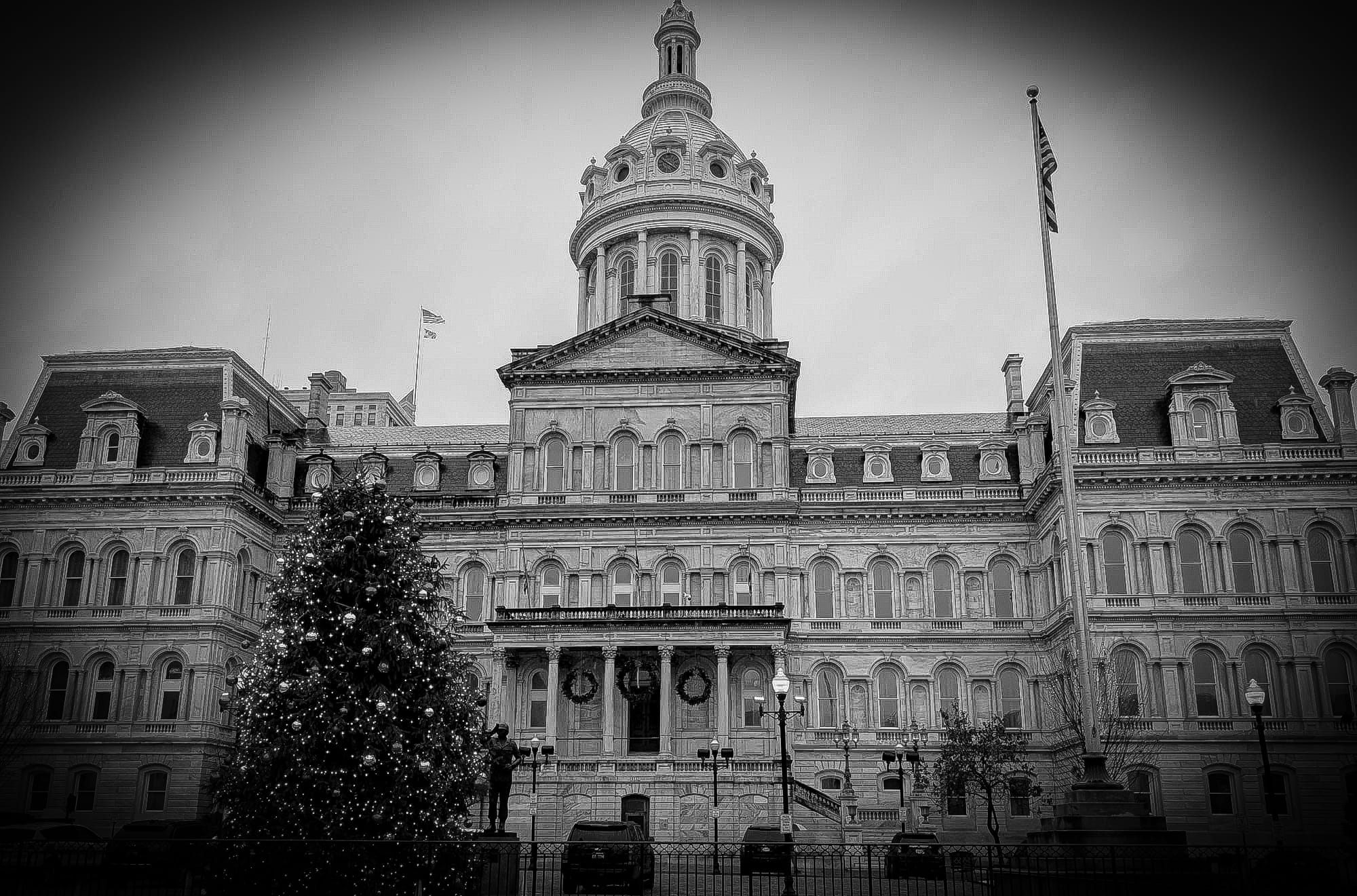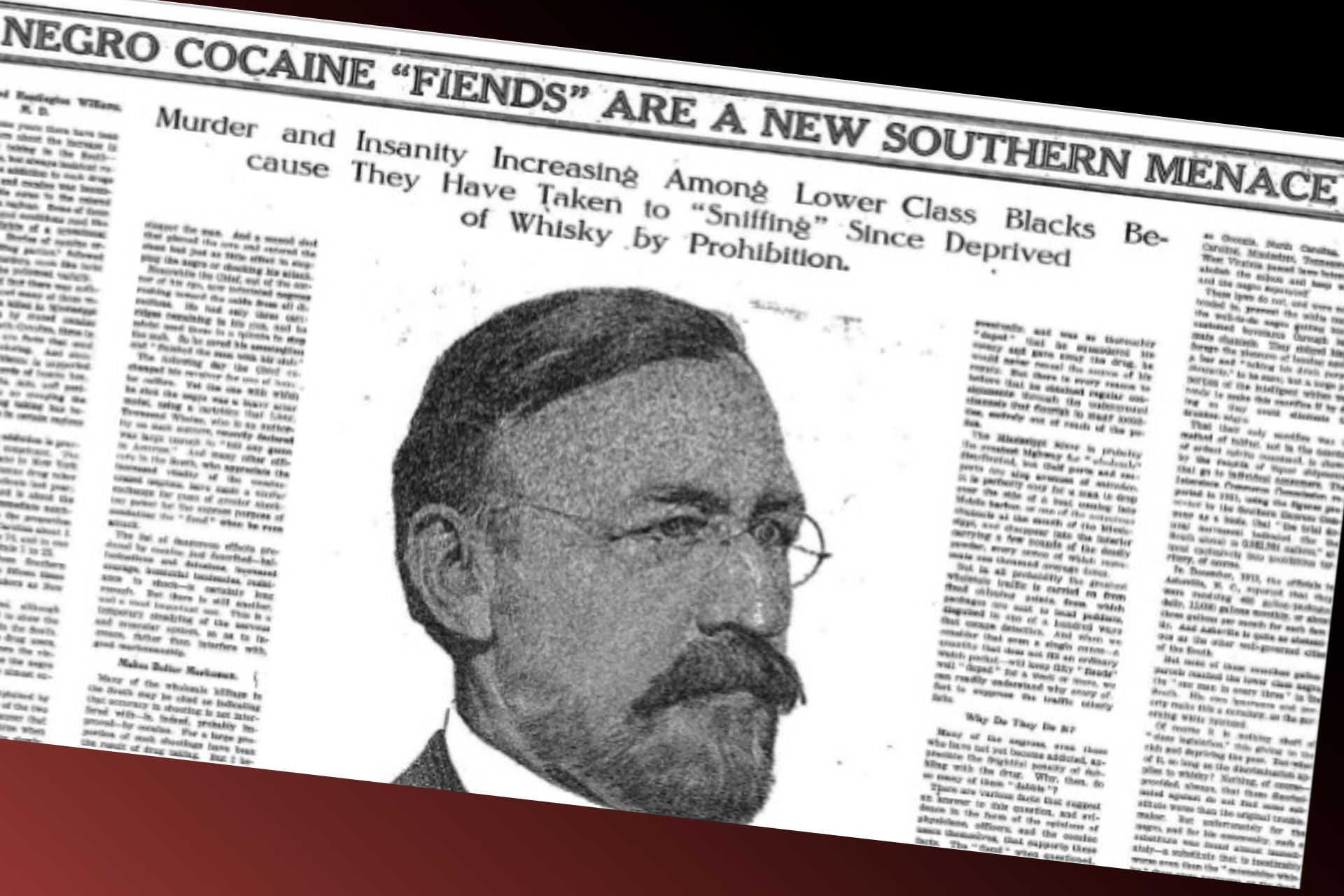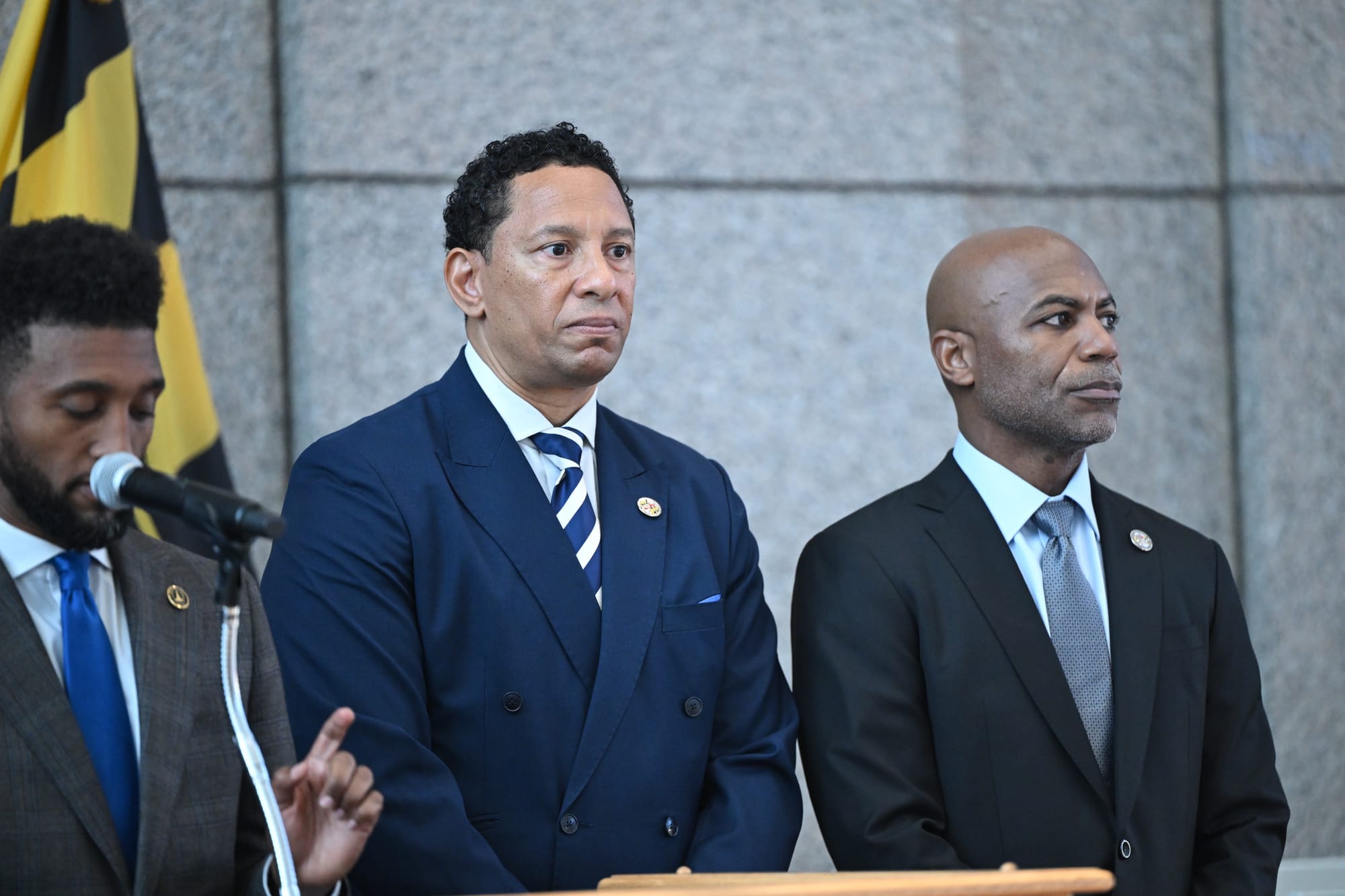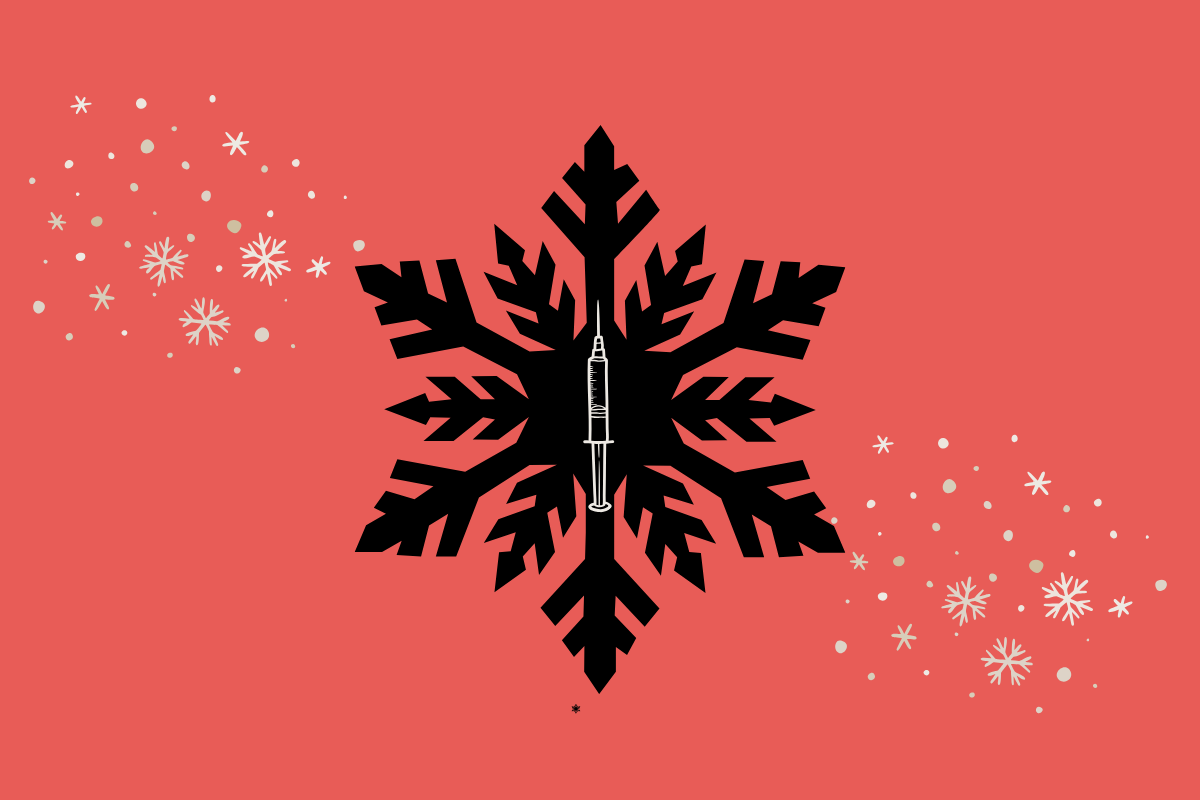
As Baltimore officials try to convince the public they care about people who use drugs, Police Commissioner Richard Worley said the quiet part out loud this week: The department is targeting them for arrest, using them as pawns to get their hands on suppliers.
The admission by the city's top cop was a "mask off" moment that undermined what appeared to be a growing consensus among Mayor Brandon Scott, council members and Worley himself, all of whom have admitted that they cannot arrest their way out of an unprecedented overdose crisis. Officials have repeatedly emphasized the importance of harm reduction; in the same breath, they've continued to bankroll a notoriously corrupt police department without hesitation as its officers make a concerted effort to arrest some of the city's most vulnerable residents.
“We want to ultimately get to the supplier of drugs,” Worley said at a Public Safety Committee Hearing on Tuesday. “The way we get to the supplier of drugs is by arresting dealers. The way we get to the dealers is by arresting the users. There’s no way around it.”
So, whose interests does the city really serve?
The hearing, which was supposed to focus on “public health-centered solutions” to the overdose crisis, demonstrated city officials' ongoing identity crisis regarding drug policy.
On one hand, those who have the power to pass laws baselessly claim to understand the need for an evidence-based and compassionate approach to drug use.
On the other hand, those who enforce the laws are actively throwing drug users into the deeply flawed carceral system without any pushback from those who are supposed to lead the city. In fact, some officials, such as Councilman Mark Conway, have advocated for even more heavy-handed policing.
At the hearing, Conway grilled police officials for not doing enough to crack down on "open-air drug markets" in a moment of performative, political grandstanding, which he has repeatedly done as he tries to position himself as a leader in the city's response to the overdose crisis.
The juxtaposition between the drug warriors' comments and those made by Acting Health Commissioner Dr. Michelle Taylor at a Thursday committee hearing on her nomination couldn't have been more apparent.
Taylor, who will now face a confirmation vote before the full Baltimore City Council next week, doubled down on the need for compassion for those who use drugs, citing decades of evidence that refute arguments for punitive drug policy. That includes overdose prevention centers.
If confirmed, Taylor asserted the department will do "everything we can" to open OPCs to build upon the city's progress in curbing overdose deaths, which saw a historic drop last year.
"It's time to bring in some of those other tools that we know are working globally, and in other cities in the United States, so that we can continue those reductions and continue the trend that we're seeing nationally," Taylor said.
After years of demands from harm reduction advocates, vocal support for more ambitious reforms such as OPCs seems to be growing. Council members Zac Blanchard and Ryan Dorsey have both publicly advocated for the facilities, with Dorsey explicitly calling for city-sanctioned sites.
Yet the mayor's administration has refused to commit to using its power to unilaterally open OPCs, making Taylor's promise about doing "everything we can" seem empty. The mayor has only supported legislation at the state level to legalize the sites, but those bills have repeatedly died in committee over the years.
For decades, the city's drug policies have remained relatively stagnant, and drug users are now worse off under State's Attorney Ivan Bates. Meanwhile, the drug warriors of Baltimore are not only holding seats of power but also getting people incarcerated and killed.
And their crackdowns have only become stronger.
On Tuesday, police officials bragged that there had been 1,450 drug-related arrests in 2025 as of August 30, a 16% increase over the same period in 2024. Of those, 61% resulted in felony charges, and there were nearly 150 marijuana-related charges.
In June, my investigation for the Baltimore Beat found that drug charges plummeted for most of the last decade, but they've ticked up under Bates. People arrested on drug charges are almost exclusively Black, with the group making up 92.5% of drug-related arrests last year.
Like the overdose crisis, during which older Black men have at times died at double the rate of their white counterparts, policing overwhelmingly targets poor, Black communities.
In the matchup between public health and public "safety," the city cannot have it both ways — at least as long as city officials bend their knees to the insatiable demands of the carceral beast.
As I've repeatedly reported, studies have shown that drug-war policing, such as what the BPD is conducting, can increase overdose death rates by disrupting the drug supply and pushing drug users toward riskier sources. It has also been found in some cases to increase violence.
As long as these crackdowns continue, the cops are actively undermining any "public health-centered" approach to the crisis — even if city leaders are planning behind the scenes to ramp up the city's harm reduction infrastructure with the addition of OPCs.
I ask again: Whose interests does the city really serve?
It sure as hell isn't the interests of those who use drugs, as evidenced by the fact that the BPD's budget rose to nearly $613 million this year as it puts them in cuffs, all while the health department took millions in cuts and President Donald Trump launched an assault on harm reduction funding.
And it isn't the interests of anyone who truly believes in public health, either, as council members continue to glaze over public health-centered solutions, demanding even more policing under the guise of "public safety" while pursuing political clout.
It's become increasingly clear that the BPD's top brass, with support from city officials, are serving the interests of jails, prisons and those who want to see drug users rot. The department is fueling mass incarceration and robbing people of their quality of life — the same three-word phrase officers claim to protect through broken-windows policing. And that's all assuming the department's brand of drug enforcement doesn't kill drug users first.
Not only does Baltimore have an overdose crisis, but it also has a drug warrior crisis.
Without a change of leadership, a change of heart or the abolition of the punishment bureaucracy occurs, the detrimental impact of those two plagues will surely outlast the suits and ties in City Hall who are allowing them to fester.

Last week's newsletter: "The Art of Relapse: Shame, Hopelessness and Suicidality"
On the evening before International Overdose Awareness Day, I awoke to the house manager of my sober-living house standing over me, naloxone in hand, as I rose up and got a feel for my surroundings.
I was lying in bed with my laptop pushed to the side; I assume I had been writing. He promptly but calmly informed me that I had to move out by the morning and live elsewhere for at least three months to clean up my act. I was disoriented and in shock, but I can remember with great clarity the weight of shame from using and uprooting myself yet again. I briefly told him about my recent struggles with mental health before I shook the numbness out of my legs and immediately did what I've trained myself to do in moments of fear: I packed a bag, rented a motel room for two nights, grabbed a handle of cheap Canadian whiskey and copped some more dope.
The last thing I remember was sitting in a dimly lit room, curtains closed, finishing last week's newsletter. I chugged as much liquor as I could as I emptied the powder from about a dozen gel capsules onto the small table. It was an act of desperation — one that I hoped would bring blackness, an absence of pain and a way out.
Read the full newsletter here.
Mobtown Redux's Overdose Data has been updated with the latest local, state and national data
Baltimore's overdose death toll in 2024 has increased to 778 — this is preliminary data that's subject to change as causes of death are determined. That marks a 25.4% decrease from the year prior.
In the 12-month period ending in June, Baltimore saw 563 deaths, a death rate of 96.1 per 100,000 people. Statewide, there were 1,338 deaths, a death rate of 21.7 per 100,000 people.
The data indicates that fatal overdoses continue to trend downward after years of climbing, though poor Black neighborhoods in West Baltimore continue to suffer the most.
Check out Mobtown Redux's Overdose Data Dashboard here.
Click here to learn more about harm reduction resources in the Baltimore area.
Filter: "'Murder on the High Seas'—Trump’s Drug-War Strike Crosses New Line"
The history of the global drug war is rife with murder and mayhem caused by United States military interventions.
Relentless US military interference in Latin America through the 20th century and beyond—take Operation Blast Furnace in Bolivia, the 1989 invasion of Panama or Plan Colombia in the 2000s—has destabilized the region, setting the stage for violent illicit markets to flourish. During the “War on Terror,” the US military bolstered the heroin market in Afghanistan while officially opposing it, creating a power vacuum for warlords and different factions involved in the drug trade to exploit.
As damaging as these campaigns have been, they involved efforts to, if not uphold international laws and protocols, at least cloak actions in placating language or come up with serviceable coverups.
Click here to read the full article.









Comments